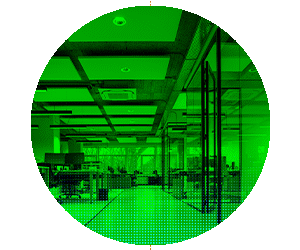What Is a Business Rules Engine?
“A business rules engine is a piece of software that takes decisions that were normally made by humans and puts them into a computerized format so they can be executed repeatedly,” says Michael zur Muehlen, associate professor of information systems at the Stevens Institute of Technology. With BREs, he says, “decisions are always made the same way, the same criteria are applied. There’s no human judgment that sometimes can go one way, sometimes can go another way.”
Such rules engines have been around since the 1980s, zur Muehlen notes, with Fair Isaac Corp. (better known as FICO) widely seen as a pioneer.
Businesses have many rules that are evaluated every day, ranging from whether transactions should be approved to where customers should be directed. Without a BRE, humans make decisions at their own discretion, and that is a process ripe for inconsistency.
READ MORE: How artificial intelligence can promote more data-driven decisions.
How Do Business Rules Engines Work?
As IBM notes in a post, for rules to be read by automated applications, they need to be written in conditional programming languages. Think statements that include “if-then,” “if-else,” “only if” and so on. The rule has a set of conditions and then a set of consequences based on the conditions.
IBM lays out a simple example for when a customer returns a product: “IF it has been less than 30 days since the customer ordered a product, THEN refund the product or ELSE, offer store credit.”
Another basic example, zur Muehlen says, is setting conditions for how to rate credit scores on a scale of 300 to 850, with anything from 300 to 500 being rated as low, anything above 700 rated as high, and anything in between rated as medium quality. Using a BRE, a company can change thresholds or boundaries without having to change underlying business logic.
If, later on, the company wants to adjust what it considers a high credit score, it can fine-tune the criteria in the BRE without having to make changes to other applications.
“It makes you more agile in terms of change management,” zur Muehlen says.
Once rules are defined, they are stored in repositories; BREs then allow applications to access the rules and execute them in runtime environments, according to IBM. The application sends data about a request to the BRE, and the BRE then “checks the request against the relevant rules and returns a decision. Finally, this decision triggers the application to take some specific action.”
DISCOVER: Increase digital velocity with automation gaurdrails.
What Are Some Examples of Business Rules?
Business rules boil down to decisions that are made where parameters of the decisions are being put together, zur Muehlen says. Examples abound in almost every industry.
For instance, for airline flights, if passengers want to upgrade from economy class to business class, business rules are used to determine the order in which customers are added to the upgrade list and which priority is used to evaluate their upgrade request. Those rules may include the customer’s frequent flyer status, the ticket fare and when the passenger checked in for the flight.
After those inputs are taken into account, the BRE uses rules to automatically determine, if space is available, who gets the upgrade. Different airlines may have different rules for how frequent flyer customers are classified, but that status is an example of a rule.
As IBM notes, business rules can also be used to distribute leads or customers internally to different teams. For example, if a lead has under 100 employees, then the BRE would automatically direct that lead to the small business sales team; if the lead has between 100 and 1,000 employees, the lead would be directed to the medium-sized sales team, and so on.












